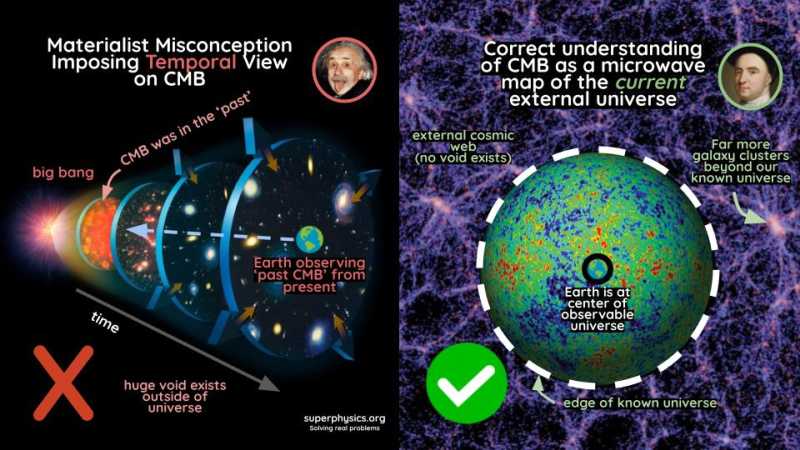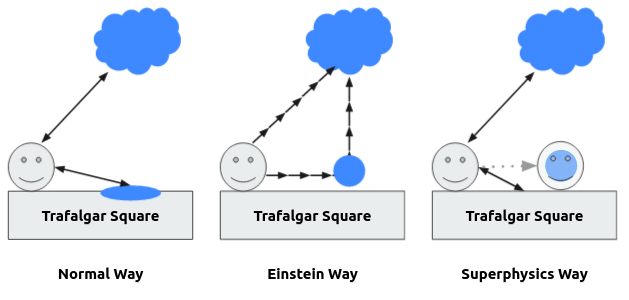The Properties of Space
Table of Contents
We define:
- space as the gap within perception
- distance as the gap between perceived identities, as objects, places, events, etc.
Physical Space as Spacetime, Metaphysical Space as Aetherspace
Superphysics divides reality into the Physical and Metaphysical Domains, as the Cartesian View or Cartesian Dualism. This is different from Physics which only allows the Physical Domain.
- The space in the Physical Domain is called Physical Space.
This is detected by the physical eyes and touch. This is in the Lower Spatial Layer, as space-time.
- The space in the Metaphysical Domain is Metaphysical Space.
This is detected by thought and intuition (a 6th sense feeling). This is in the Middle Spatial Layer as the aetherspace.
The division between physical and metaphysical space (and time) is demarcated by the Spatial Internal Boundary or SIB which we call the edge of the universe, explained in the previous chapter.


Spacetime is 2-Dimensional, The Aetherspace is Arbitrary
Modern Physics uses differential geometry of Gauss and Riemann to create 3-dimensional worlds or objects. This tries to create the world in advance of whatever perceptions are made within that world.
The problem is that perceptions are arbitrary based on one’s gravitational signature. And so whatever 3D world is created will either:
- not match reality
- be so complicated to plot in 3D

This is why space in Superphysics is plotted sequentially, similar to a printer which prints an image line by line.
All these slices or pages then only follow Euclidean geometry. These are glued together by the abstract mind to create 3D worlds through aethereal links between perceptions.
